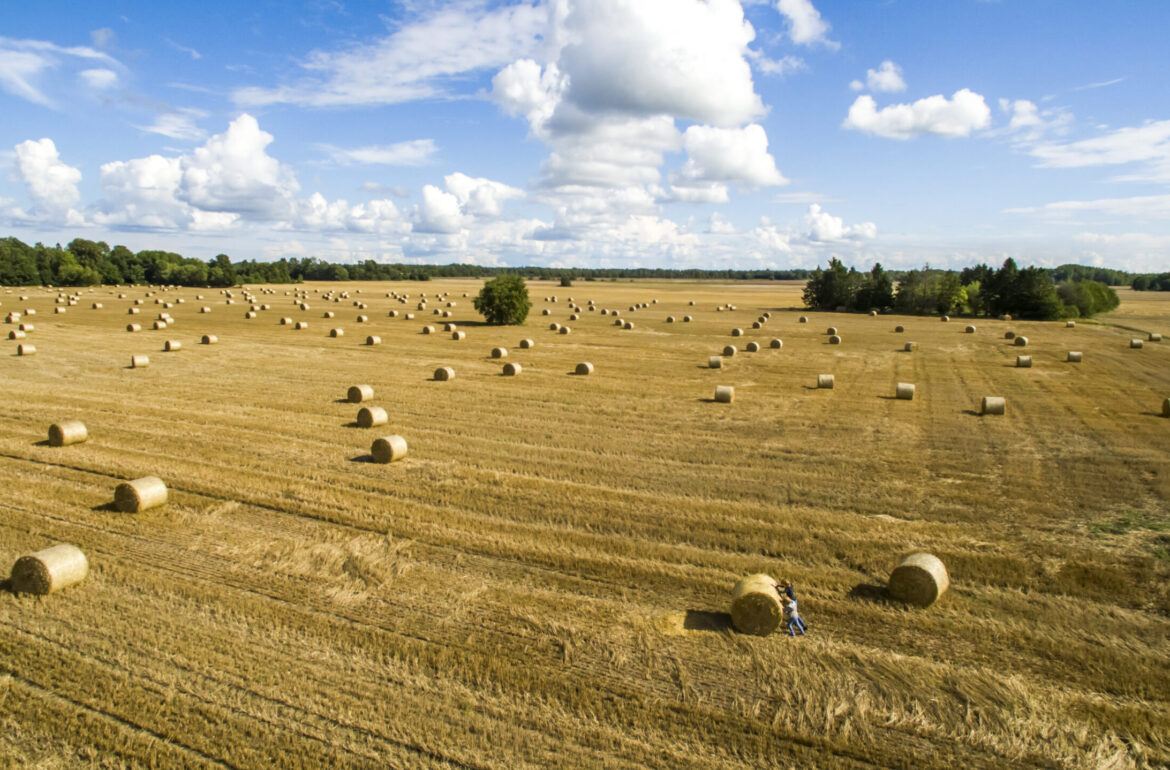Evelyn Uuemaa is a geographer by heart and professor in geoinformatics. She holds a MSc in geoinformatics and PhD in landscape ecology and environmental protection, and is developing Estonian Landscape Geoinformatics working group at the University of Tartu. Her research interests evolve around the interactions of land use and land cover and water quality, landscape changes and geospatial modelling with machine learning.
By 2050 the world’s population will reach 9-10 billion, which means that food production must increase significantly. The goal of Uuemaa’s recent work is to develop sustainable methods to boost yields while reducing environmental impacts.
Uuemaa and her colleagues are developing an integrated geospatial data management and analysis system, as well as a modeling and machine learning framework for optimizing land management.
They eventually hope to create nature-based alternatives, such as wetlands and riparian buffers, to reduce agricultural nutrient runoff from watersheds.
The team will also tackle the problem of huge geographic data processing. They want to combine all of the data into a data cube and investigate it using concurrent execution and high-performance computing.
Back in time
Evelyn Uuema was fascinated by biology since her childhood and joined the biology class of Hugo Treffner Gymnasium in high school. Moving from Valga to Tartu for high school was unique at that time. “In those days, you didn’t go to high school in another town,” she said.
Uuemaa said she excelled in both science and math in school and thought about continuing her studies in biology, following in the footsteps of her sister. But life had other plans.
“My other sister, a geographer, persuaded me to go into geography because there are a lot more career opportunities,” she said, adding that it was a happy choice because her current work combines her two school favorites, science and technology.
Geography remains a confusing university specialization, according to Uuemaa. School geography is considerably different from university geography. She said that school geography covers countries, natural zones, and economic geography, but university geography is more engaging because to geoinformatics, which is unheard of in school curricula “.
Uuemaa received all her degrees from the University of Tartu, from bachelor’s to doctorate. During her academic career, she also spent two years in New Zealand for post-doctoral studies, but the path always led back to Tartu.
“There’s buzz and culture, but you can also get out into the countryside quickly if you need to,” she said. “Everything is at her fingertips. As a mother of four, it’s a big plus that the kids can get around the city on their own and the parents don’t have to play taxi driver all the time.”
A researcher all the time
Science also plays an important role for Uuemaa outside the university. “You are always a scientist. Even when you close the door, you’re always thinking about some exciting scientific challenge,” she said. She also talks to her children about science and topics related to her field. Her children get a very close look at what life as a scientist is really like, she said.
In addition to science, Uuemaa has several other responsibilities. She will become a professor of geoinformatics and head of the department this summer, managing people and projects, applying for funding, developing curriculum, and consulting with various organizations.
In addition, Uuemaa teaches several courses. She said that balancing time between research and teaching is always a challenge. “There is a certain amount of time for teaching, and this sets a framework for research. But I enjoy teaching and it’s gratifying to see how students develop and sometimes come up with much cleverer solutions than even I can,” she said.
That often means the time for research is in the evenings or on weekends, when emails aren’t constantly hitting the inbox. “You can’t do science by doing it for five minutes and then moving on to something else. I need longer periods of concentration,” she said.
Uuemaa said that it also takes a lot of time to apply for funding. “All researchers know the feeling of working on a proposal for months and then not getting funding,” she said.
Successful project
Uuemaa said that about a year and a half ago, she felt it was time to leave academia behind and look for a job in the private sector.
“Geoinformatics is a field where I would find a job in the private sector any day. It’s in high demand right now and there’s a huge shortage of experts,” she said.
In addition, all projects were coming to an end and there were no new ones. So exit ideas quickly came up. However, a couple of new projects came along soon enough, and this fall she was awarded a European Research Council (ERC) Established Researcher grant of nearly €2 million.
Uuemaa said that the grant is excellent funding for cutting-edge research, but it is also recognition. An ERC grant is usually seen as a sign of excellence, innovation and the potential to make important discoveries in science.
The ERC funding is awarded to a researcher who has gained independence, which is challenging in science, she said.
Uuemaa and her colleagues will use geoinformatics and machine learning to plan riparian buffer zones to reduce the environmental impact of agriculture. The working group will determine where these areas will be most effective, as agricultural fertilizers affect surface water.
Moreover, the team will use remote sensing data and ground observations. Putting this big data to a good use is one of the key objectives she said. “Every day, terabytes of data come in from satellites, and we are nowhere near being able to use it all. We are sitting on a huge pot of gold without even realizing it,” she said.
This article was originally published on the Estonian Public Broadcasting online news portal.
 Back
Back



